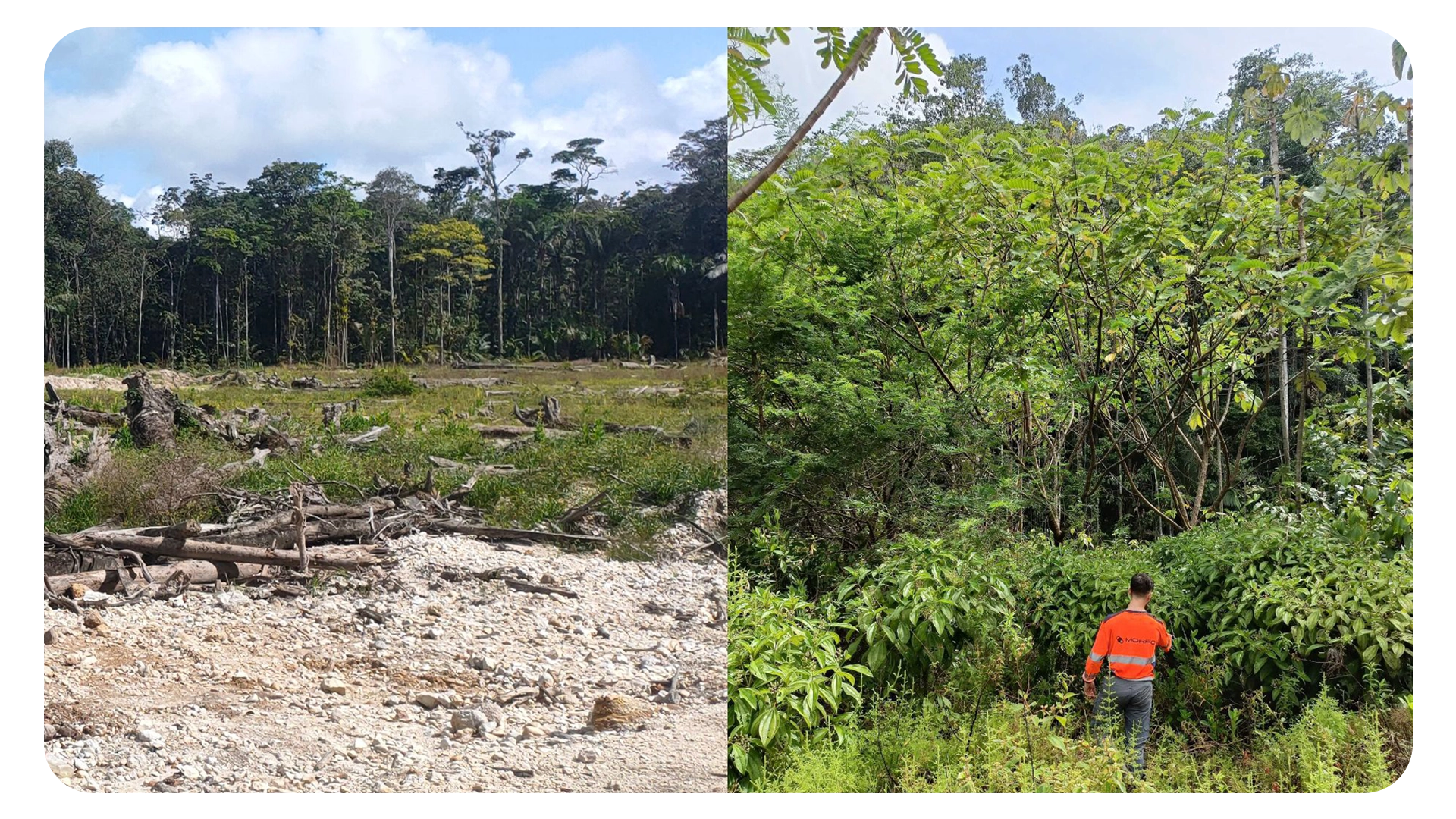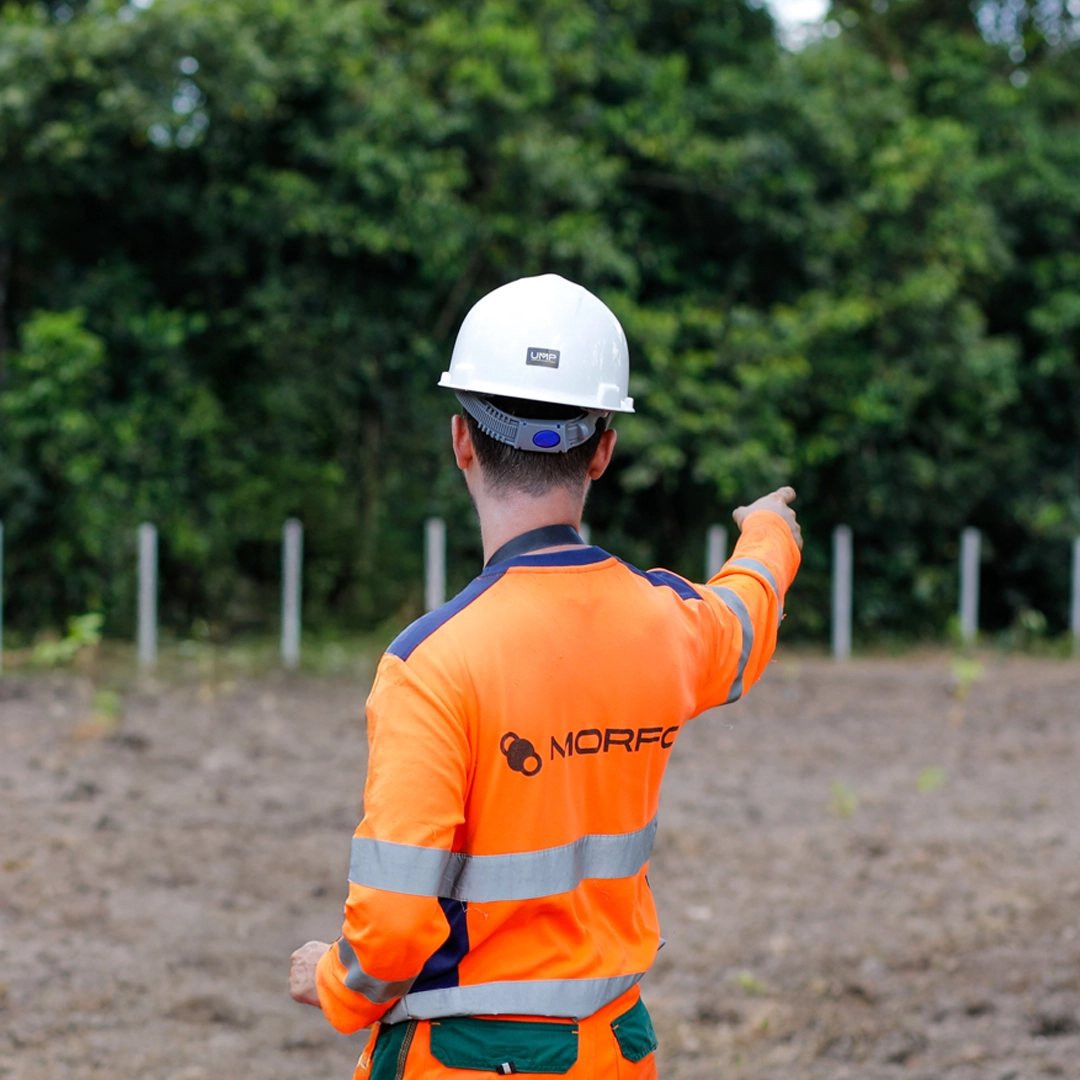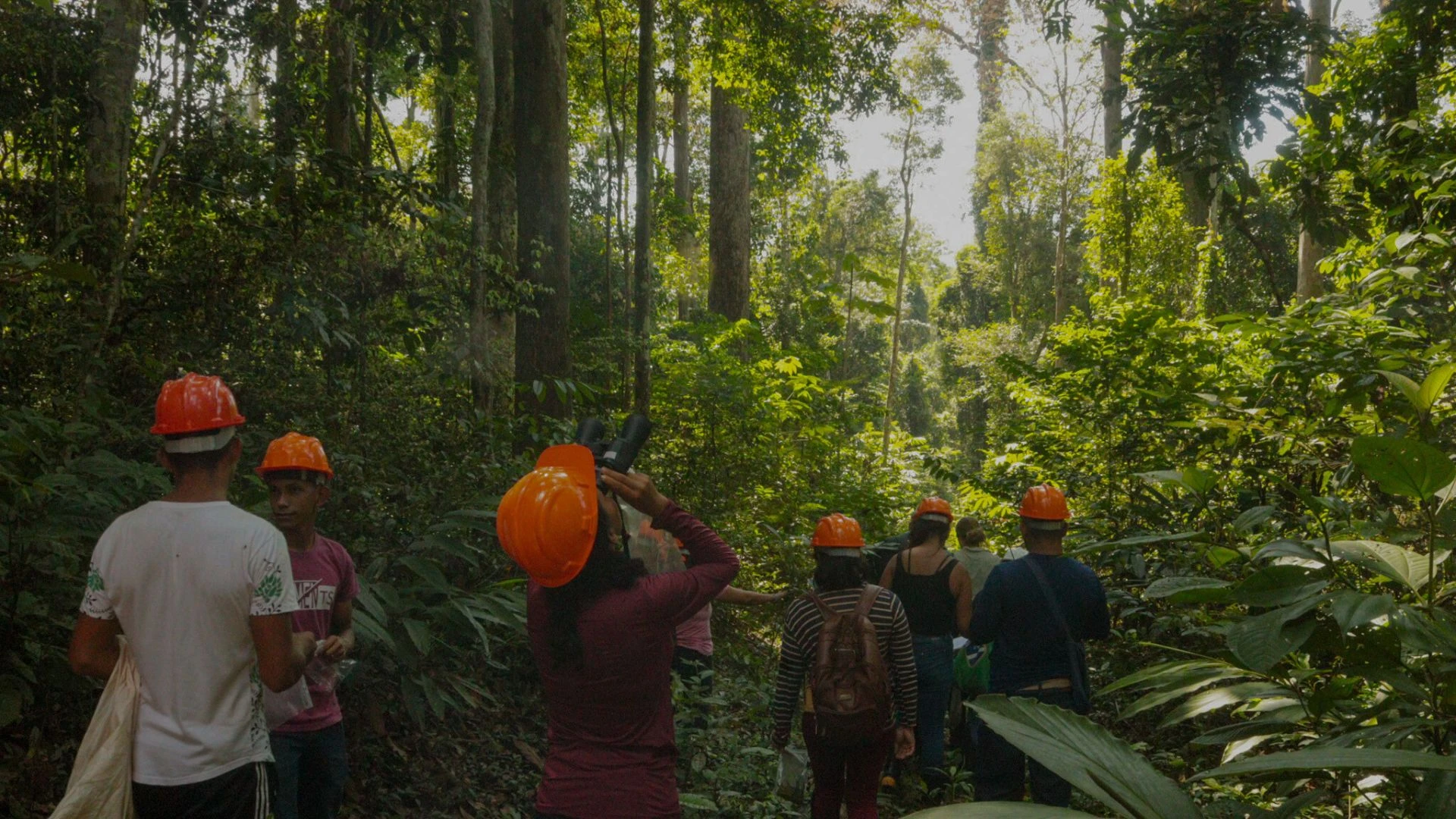MORFO's solution
We restore ecosystems from the ground up, starting with the soil, guided by science, and scaled by technology.


FOREST INTELLIGENCE
The best restoration strategy starts with clarity
Before any restoration work begins, our job is to reduce uncertainty — technical, regulatory, and financial.
MORFO’s Forest Intelligence suite provides the insights you need to decide where to act, how to restore, and how to secure regulatory approval with confidence.
Area qualification
Aerial and satellite-based diagnostics identify and prioritize the zones where restoration will have the highest ecological impact and the lowest operational risk. We integrate land-use history, soil and slope data, and vegetation dynamics to classify each polygon by feasibility and compliance potential.
Result: your company stops wasting resources on unviable plots and focuses investment on hectares that deliver measurable results.
Technology selection
Each landscape requires its own combination of methods — from natural regeneration to direct seeding or seedling planting. Our comparative blueprint matches each zone with the optimal mix of restoration technologies, balancing cost per hectare, regulatory acceptance, logistics, and timeline.
Result: lower implementation costs, faster delivery, and reduced risk of regulatory rejection.
Compliance masterplan
Regulatory uncertainty is one of the main causes of project delay. Our team develops a clear, audit-ready roadmap that defines approved methodologies, acceptance criteria, and evidence requirements — before fieldwork starts.
Result: faster permitting and fewer surprises when auditors review your project.
PRAD elaboration (only in Brazil)
Our environmental engineers and forest specialists prepare complete PRAD documents, aligned with the latest norms and regulator expectations. Each plan integrates zoning, target species, technical justifications, and monitoring strategies — ready for submission and approval.
Result: your company keeps its licenses secure, avoids penalties, and demonstrates environmental responsibility.

FOREST OPERATIONS

From design to delivery, with the right method for each terrain.
Once the plan is clear, MORFO executes restoration operations using the most advanced combination of human expertise and technology. Our field teams, drones, and proprietary seedpods allow us to restore large, complex, or remote areas quickly and safely — while maintaining biodiversity standards and regulatory compliance.
SOIL REGENERATION
Before planting, we restore what makes forests thrive: the soil. MORFO’s soil regeneration protocols combine drone mapping, microbial analysis, and targeted interventions (mulching, mycorrhizae inoculation, erosion control) to reactivate soil fertility and structure.
Result: higher survival rates, lower maintenance costs, and more resilient forests.
Forest plantations for compliance
We deliver full restoration projects linked to PRAD or TAC obligations, from land preparation to maintenance and reporting. Our teams ensure traceability of each step, aligning operations with the regulator’s expectations and your company’s audit standards.
Result: compliance achieved safely, efficiently, and with documented proof at every stage.
Forest plantations for carbon projects
For investors and companies seeking verified carbon results, MORFO restores native and mixed forests optimized for biodiversity and long-term carbon permanence. We integrate community engagement, sustainable species selection, and robust monitoring to ensure credible, certifiable outcomes.
Result: high-quality carbon credits grounded in ecological integrity and social value.
FOREST PERFORMANCE
Because what gets measured, gets approved.
Restoration is not complete once trees are planted. The final proof of success lies in the forest’s ability to grow, adapt, and persist.
MORFO’s Forest Performance suite ensures your restored areas remain compliant, verifiable, and healthy — year after year.
Multi-year forest growth analysis
Using drones, satellites, and field surveys, we monitor the evolution of your forest — canopy closure, species survival, biomass, and biodiversity indicators. Our models detect trends and deviations early, allowing proactive management and continuous improvement.
Result: a data-driven view of forest health that strengthens your audit readiness and investor confidence.
Corrective actions
When parts of a restoration area underperform, MORFO provides targeted corrective actions — replanting, seedpod gap-filling, invasive species removal, and soil amendments.
Result: lower rework costs and a higher overall success rate across your portfolio.
Compliance reporting
All results are consolidated in an audit-ready reporting package, combining technical data, drone imagery, and dashboards that track progress against PRAD, TAC, ESG, or carbon standards.
Result: transparent, regulator-friendly evidence of compliance and impact.
Long-term stewardship plan
Our team helps you plan for 10–20 years of adaptive forest management, integrating risk registers, financial models, and community agreements.
Result: a restoration legacy that remains viable beyond project deadlines.

All your forest data in a single database
DASHBOARD
No more scattered spreadsheets or isolated reports.
MORFO’s dashboard brings together every data layer — imagery, biodiversity, soil, carbon, and compliance — into a single interface.Centralized, visual, and audit-ready, it turns data into decisions and progress into proof.
.webp)
FREQUENTLY
ASKED
QUESTIONS
Through a science-based approach combining soil analysis, seedpods, AI, and drone technology to restore fertility and biodiversity.
Drones are a tool for scaling up forest restoration on two levels:
>Forest analysis and monitoring
Before planting, we use a variety of analysis methods to study the soils and characteristics of the area to be reforested. Some of these analyses include satellite imagery to obtain an overview of the area, and drone imagery with a more precise resolution for detailed information.
Data is then combined with our species catalog established to produce a planting scheme. Drones are used to geolocate species present before and after planting, enabling us to differentiate between different forest strata and accurately monitor vegetation growth.
>Drone seeding
We use custom agricultural drones capable of lifting fairly substantial loads and dispersing unique seedpods that we have developed with public laboratories and scientists. These drones are large, around 1.50 meters in diameter.
Our seeds are placed in seed capsules. These capsules contain all the biological and nutritional elements needed for long-term reforestation. We use drones to disperse and plant these capsules on site, ensuring effective and sustainable reforestation practices that benefit the environment.
The three main benefits of using capsules are:
> Seed protection
Seed capsules protect seeds from external factors, preserving their viability.
> Feeding during early stages of growth
Seed capsules provide essential nutrients to support seedlings during their early stages of development.
> Restoration of degraded soils
Our method helps to revitalize and revitalize impoverished soils, promoting the overall recovery of ecosystems.
MORFO devotes itself daily to research and development in our in-house laboratories and in collaboration with partners to carefully select the best seeds for each reforestation project. Our catalog currently includes over 600 species that have been studied or are currently under investigation. To be selected, species must meet a minimum of 13 criteria, some of which are mandatory while others are not.
In our laboratories, we achieve survival rates averaging 80% (from 55 to 100% depending on the species). The goal, by compiling our technologies and methods, is to get closer to this percentage rate on the field.
We pay particular attention forest growth and health by monitoring biomass, biodiversity, and carbon stocks, though in-depth regular analyses. This helps us diagnose any issues or low success rates so that they can be resolved, for example through future planting.
MORFO uses many tools to carry out accurate and regular monitoring: drone and satellite imagery, artificial intelligence, on-the-field analyses, and more.
MORFO reforestation monitoring is regular and long-term. It extends over a period of 5 to 30 years. This period varies according to the complexity and scale of the project, as well as conservation and preservation objectives.



.webp)